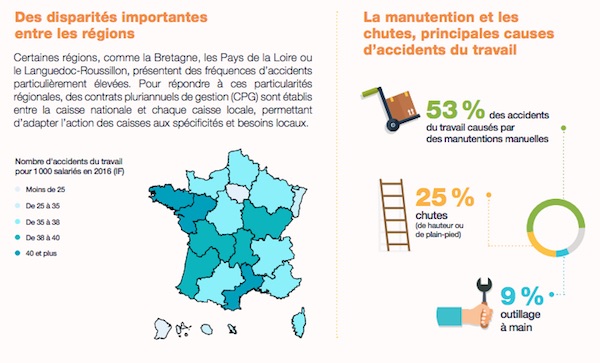The construction sector has seen a significant drop in work accidents, while the personal assistance sector is heavily impacted.

The number of accidents at work is at its lowest since 1946. Last year, more than a million claims (accidents at work, commuting and occupational diseases) were recognized and taken care of. Some 764,000 of them have resulted in a work stoppage or permanent incapacity, reveals the latest report from the Health Insurance – Occupational Risks branch.
This drop in claims is due in particular to the drop in the number of work accidents in the construction industry. This sector remains one of the most affected. In addition, musculoskeletal disorders (MSDs) such as asbestos-related cancers decrease, respectively by 4 and 9.5%.

Source: press kit for the Health Insurance – Occupational Risks branch.
7 times more psychic affections
On the other hand, the number of occupational cancers other than asbestos is increasing (+ 10%) and mental illnesses are exploding (+ 40%). In her editorial, Marine Jeantet, director of occupational risks, specifies that the cases of mental illnesses treated as occupational illnesses have multiplied by 7 in 5 years.
Furthermore, this report shows that the personal assistance and services sector is in poor health. Between 2015 and 2016, the number of accidents and illnesses increased by 2% and reached “a worrying frequency”. In fact, 94.6 work accidents per 1,000 employees were recorded in 2016, ie three times more than the average. In 10 years, the loss experience in this sector has increased by 45%.
Source: press kit for the Health Insurance – Occupational Risks branch.
Prevention
What about prevention in the workplace? The significant drop in accidents in the construction industry proves its effectiveness. At least 1,600 project owners have been trained to disseminate occupational health and safety criteria and thus prevent falls. Thousands of visits to companies and work sites have also taught us how to do the right things.
With regard to the prevention of occupational cancers, efforts have also been noted. In 2016, more than a third of the 600 targeted companies implemented equipment and awareness-raising actions to protect employees from the risks of exposure to diesel engine fumes.
.
















